A lot of people have asked me how I can ride through a New England winter. Dressing properly for the weather certainly has a great deal to do with my enjoyment of it, but I have to admit that I also really get a kick out of the looks on people’s faces when I ride my bike to work in 5 F degree temps or do a century with snow flurries on and off throughout the day.
This is my sixth winter here, after moving from a much milder climate in North Carolina. I’ve changed a few things over the years, but this is what works for me currently. Hopefully, it will help others.
Tips For Winter Cycling
In this article, I will talk in general terms, but will also include specific brands when talking about what I use.
1. Focus On The Clothing
I’ll start with clothing. One of the biggest mistakes that people make is overdressing. Remember that exercising generates heat. Clothes that wick moisture away from the body will keep you dryer and therefore warmer. Stay away from cotton.
Try Cotton
When cotton gets wet, it stays wet. I dress in layers, so I can regulate temperature throughout the ride. As it warms up, I can remove a layer, and when it starts to cool down again in the late afternoon, I can start adding clothes again.
Or Silk
Silk is a natural fiber with great insulating properties. It makes a great base layer. I use silk for gloves and sock liners. There are lots of synthetics available. Two of the most common ones are polypro and Thermax. They both wick moisture away from the skin and dry quickly. Unlike Polypro, Thermax doesn’t retain odor and it can be dried in a clothes dryer. There are lots of other new synthetics out there, so wherever I say Thermax, feel free to substitute Polypro or your favorite synthetic.
Polar Fleece Is Also A Good Option
Polar fleece is another great fabric for winter sports. It retains only 1/10 of its weight in water and insulates as well as wool. It comes in 4 different thicknesses, with the lightest making a good base layer and the heaviest far more than anything I’d ever need for cycling. I do have a little sanity left!
Gore-Tex, Entrant, and other fabrics used in rainwear make good outside layers. In addition to keeping rain out, these fabrics are also very good at stopping the wind. I always have a rain jacket and rain pants with me in the winter, since New England weather is so unpredictable, and I don’t ever want to be caught in a 35-degree rainstorm without protection!
2. Protect Your Hands And Feet
I have two pairs of shoes, one for summer, and another 1 size larger for winter. This way I can use thick socks or heavy insoles. Many people make the mistake of using the same shoes and trying to stuff extra socks into them in the winter. This restricts circulation and makes the feet even colder. My summer shoes are mostly mesh – for coolness. My winter shoes are mostly leather for insulation.
I currently use a pair of leather bottom fleece insoles. Any sort of good insulated insole will help. I wear wool socks, often with silk liners. I have a pair of Gore-Tex booties made by Bellwether. These do a great job of keeping my feet relatively warm and dry. Recently I found a pair of x-c ski overshoes, which I use over my regular booties on really cold days. I avoid neoprene. Every time I have tried it, I just end up sweaty, wet, and cold. Some people tell me it works well for shorter rides, but I have had no luck with it, and avoid it completely. Anybody wants to buy a pair of neoprene gloves, socks, facemasks, and shoe covers? (See I have tried it!)
But this isn’t always enough. Sometimes it gets downright cold!
There are various foot warmers available. For less than $2 a pair, you can get this shake-em to activate them hand and feet warmers. Locally I have found these at LL Bean’s, REI, EMS, and various skiing and sporting goods shops. There are specific ones made for toes that are small enough to fit in a shoe comfortably. They last about 5 hours and are terrific. I keep a couple of extras in my saddle bag throughout the winter for emergencies. I have given them away often and every recipient has always wanted to know where to get more.
I’d like to thank John Unruh for telling me about the battery-powered heated insole made by Hotronics. REI carries these for $130-$140. I decided to spoil myself two years ago at Christmas and purchased a pair. These are fabulous. They last 8 hours on the lowest setting, 4 hours on 2, 2 on 3, and 1 on 4. I purchased a second set of batteries to use on centuries, so I could use the higher settings at times. I used these all last winter and got my money’s worth. I clip the battery pack onto my booties. It’s about the size of two c-cells and I didn’t notice the extra weight.
When it gets messy out, but not good enough for x-country skiing, I have been known to use my Sorels (good to -40F) for the commute and shorter social rides (like 30 miles)!
3. Try Taking Stops
If my feet get too cold on a ride (or any part of me, for that matter) I stop at a convenience store for a warm-up break. I remove most of my outer layer clothing. I get a cup of coffee or hot chocolate to appease the clerk 🙂 as well as warming myself. I get my shoes off and wiggle my toes to get the circulation going again. Unlike running or skiing, in cycling the feet don’t get to move around a lot.
Those big coolers that hold beer and cokes blast heat out the vents in the bottom. Standing next to those can help warm cold feet.
4. Don’t Keep Wearing All Your Clothes Inside
It’s important not to stay inside wearing all your warm clothes because the body will adjust and then feel cold when going back outside.
If riding in a hilly or mountainous area never stop at the top for any more time than it takes to add another layer. You will be sorry. Sweat from climbing will leave you cold and wet, and then flying down a hill afterward won’t do a thing to get you warm again. Try to plan rest stops at the bottom of a hill, so you can use the climbing to warm back up!
5. Don’t Skip Your Meals
Don’t forget to eat. You are burning a lot of calories to keep warm and you will need fuel. If you are doing a long ride (like a century) plan for longer and more frequent breaks than you would in the summer.
6. Don’t Forget The Bike
Let’s go look at the bike. Is it in top condition? I don’t want to have to do bike maintenance on the side of the road in sub-freezing temperatures, so I do a thorough check to make sure everything works perfectly. I also tend to go with wider tires to avoid flats. I’m currently using Michelin Express inverted tread tires on my mountain bike, and they are great – hard to find, but great! They handle ice fairly well too.
Fenders are worth their weight in gold in New England. I wouldn’t think of doing a winter ride without them. And as usual, I carry enough tools to do minor roadside repairs, tire levers, tubes, wrenches, chain tools, etc. Since I tend to ride my commute bike all winter, I almost always have lights on my bike. The sun sets early, and a flat, mechanical problem or long break can result in a ride finishing after dark.
How To Stay Safe On A Winter Ride
In the winter I choose my routes with extra care and I always have a bail-out plan. I tend to do smaller loops close to home, in case I need to bail out for some reason, like a blizzard, or a mechanical failure. I will go knock on a door, or call a friend or taxi (or AAA) if I find myself in trouble.
I try to ride with others on longer rides in the winter. First, because it’s more fun, but also it’s safer. You can watch out for each other, send for help, etc.
I try to keep my eyes open for ice on the roads. Black ice will get you on a bike, just as easily as it gets you in a car or on foot. One person asked me what I do on black ice, and I have to answer truthfully – sometimes I fall. But I’m usually wearing enough clothing that I don’t get hurt. And I have had much better luck on ice on my bike than I have in my car (maybe practicing on rollers would help.
Anyway this is how I prepare for cold weather rides ranging from a 12 mile commute, a 30 mile club ride, or a 100 mile ride in subfreezing temperatures. This is what works for me. Your mileage may vary!
Of course, there is one other option, that I’ve been seriously considering, which is to move back home to a warmer climate! Nah, it’s too much fun here !
How I Stay Warm On Colder Rides
For hands, I start with silk glove liners. Then I add either mittens or gloves, depending on the temps. I use mittens for colder weather. I like the heavy lobster claws made by Pearl Izumi. But since some degree of fine finger control is lost, if it’s over 30F, I go with gloves. The glove liners are really handy for times when I have to remove my outer gloves to do something that the bulk won’t allow me to do otherwise, like make adjustments, fix a chain, etc.
I must have a dozen pairs of gloves, but my favorites have cortex inserts, again great for blocking the wind, and just in case it gets wet out. I also usually carry a second pair for this same reason.
Protecting The Head
Since the body protects the vital parts first, if the head isn’t warm, it will steal heat from the extremities to protect the brain. This is why it is often said, “If your feet are cold, put on a hat.”
I use Swix earmuffs (very thin – fit easily under helmet), a Polarfleece face mask, and a hat or helmet cover. I recently found a new thing, called a shellaclava. It’s a fleece neck warmer, with a lycra hood. I can easily pull the neck warmer up over my face or down to regulate temperature. And my neck stays toasty all the time. I also have a facemask that I used a lot last year which wraps around and Velcro’s in the back. It is lined with fleece and has holes around the mouth area to allow breath to escape and keep the face mask dryer. I can pull it down easily for nose blowing and temperature adjusting. I also used a silk balaclava occasionally last year with great luck too.
There are also Gore-Tex helmet covers available to help block some of the wind coming through those (wonderful in the summer) air vents in the helmet.
The final touch is a pair of ski goggles. I have clear ones since I ride at night also. I don’t have to deal with my glasses fogging up when I stop at traffic lights, and my eyes stay warm. And they only cost $25-$30.
The Rest Of The Body
OK, your head, hands, and feet are warm, let’s get to the rest of you. I start with a Thermax zippered turtleneck sweater and bib shorts. The zipper in the turtleneck serves as a great temperature regulator. The bib shorts cover my back when I’m in the cycling position. Mine are ladies’ bibs and also cover the chest for additional warmth.
For cold but dry days I’ll add a pair of leg warmers before my outer bib tights. If it’s wet I’ll use my Gore-Tex bib rain pants instead of the leg warmers. I don’t want to overdress, and I still want to be able to move. I carry the ones I’m not wearing since I never know when the weather may change. I then add a rain jacket with underarm zippers. Opening and closing these will also regulate the temperature very well.
I purchased a new winter jacket last year from Performance that I like. There are lots of similar ones available now. Browsing through REI and EMS, we’ve found 6-8 different models. I prefer models with removable hoods. It is Gore-Tex, has a mesh liner, underarm zippers, and extra zippers to add a fleece vest – and it doesn’t look like cycling clothing, so I can wear it for other outdoor activities like x-country skiing, hiking, etc.
The Gore-Tex rain pants I have are from REI. They are a bib model, with very little elastic at the waist, and zip closures at the feet. I find myself hoping for a torrential rainstorm to give these two pieces a real workout!!
BTW, while bibs are handy for staying warm, it does take a little extra time to get in and out of them at bathroom stops, but for the added comfort, I don’t mind.
I also carry (and wear if needed) a wool or Polarfleece sweater or vest. If I have a mechanical problem or a flat and will be outside for long, not riding and generating heat, I want additional layers against the cold. I have mentioned that I carry several things, so I should also mention that I have either a large trunk bag or small panniers on my bike in the winter. Better to be prepared than cold and miserable. If the temperature rises, I also want a place to discard excess clothing.
Recap
One of the most important tip that I give out is to dress visibly. The sun is lower in the sky at this time of year and more likely to blind drivers. Make sure you can be seen! So there you have it. Let me know which of my tip works best for you.
By Pamela Blalock. Reprinted here on the ICEBIKE site with permission.
Also Read
- 15 Best Bikes For Heavy Riders
- How To Do Winter Cycling In Ice And Snow- Icebike Tips
- Your Guide To Winter Bike Maintenance
- How To Commute In Winter- Cycling In Ottawa, Canada
Should you have any questions or require further clarification on the topic, please feel free to connect with our expert author Pam Blalock by leaving a comment below. We value your engagement and are here to assist you.

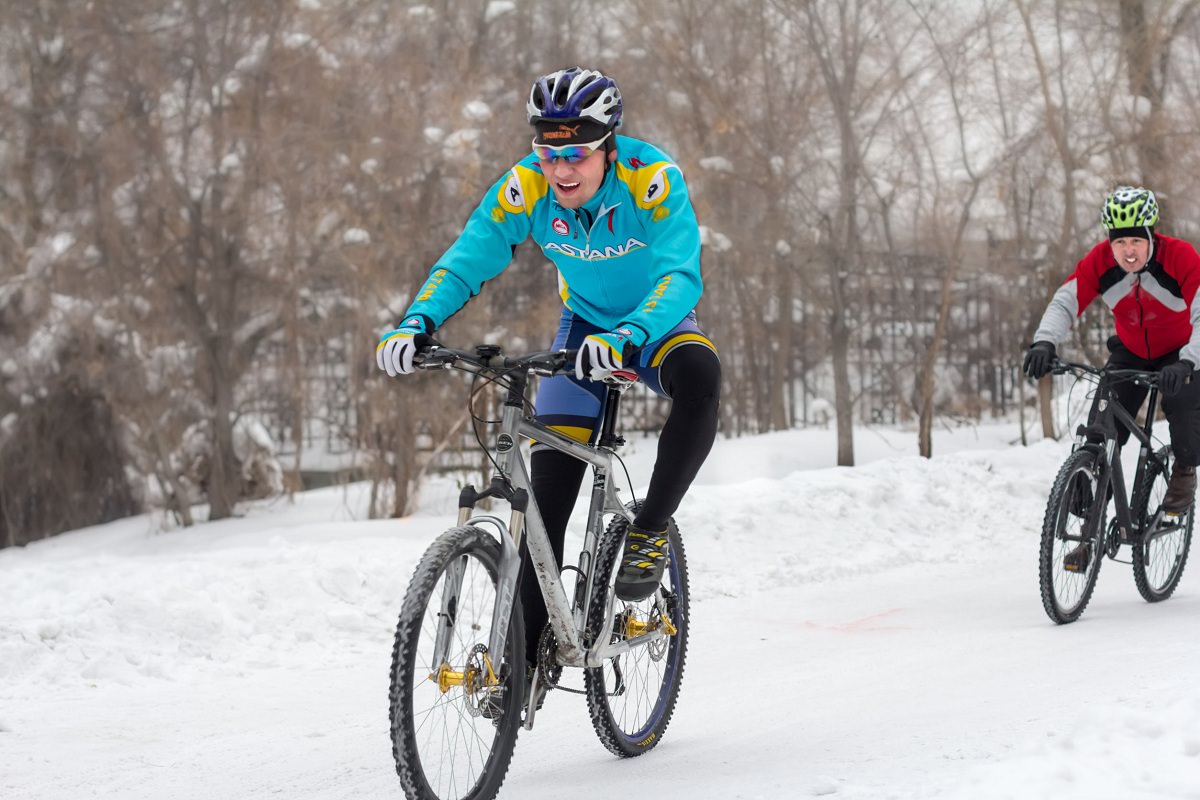
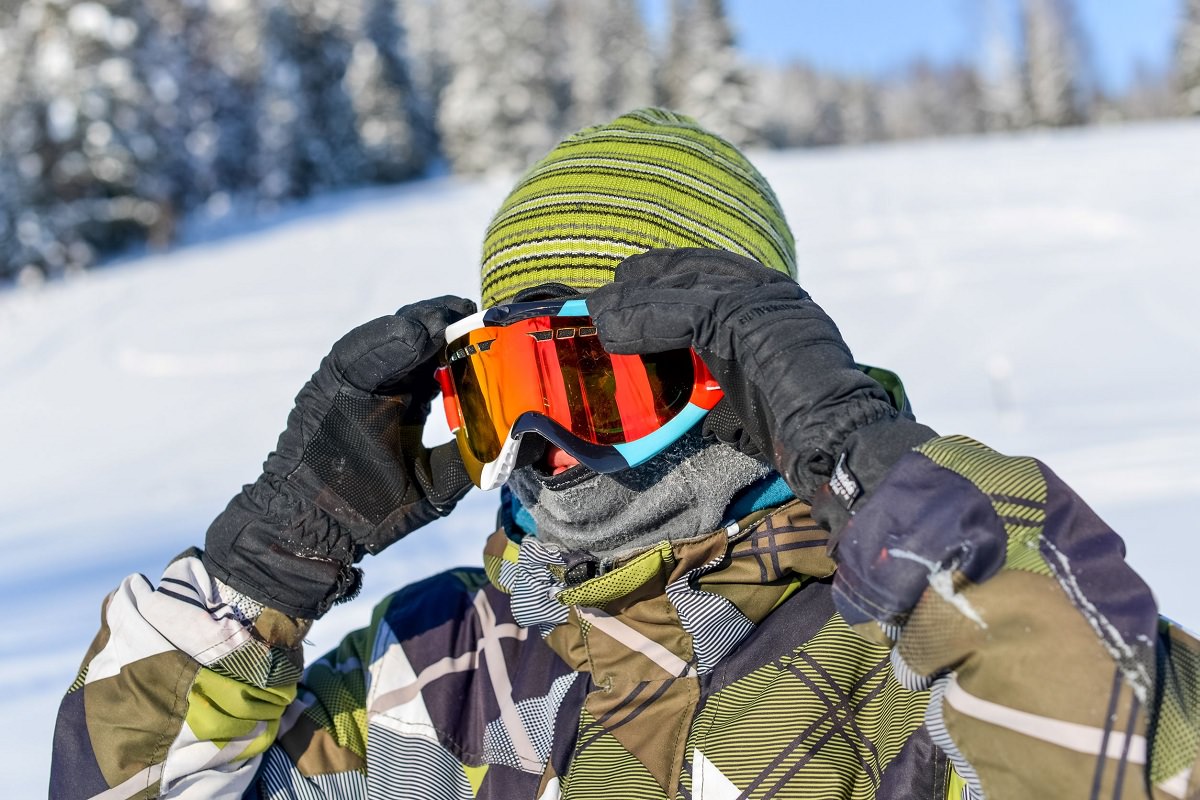
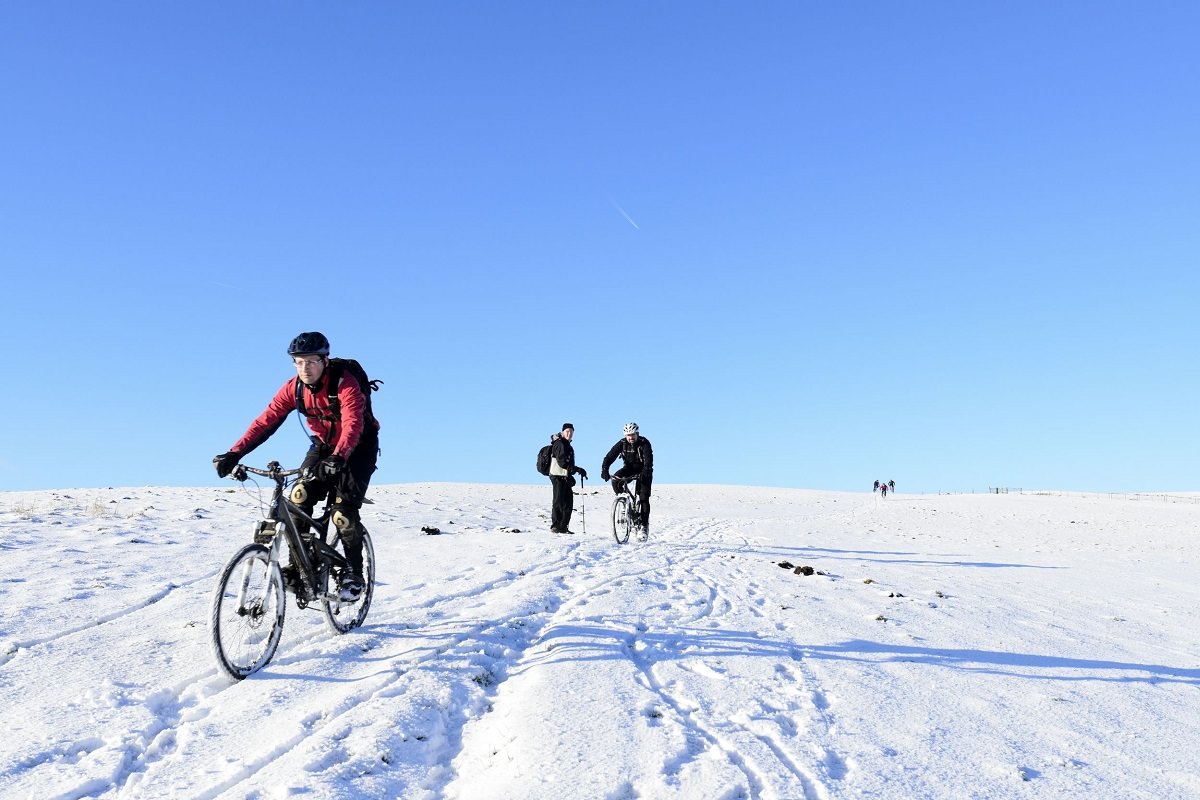
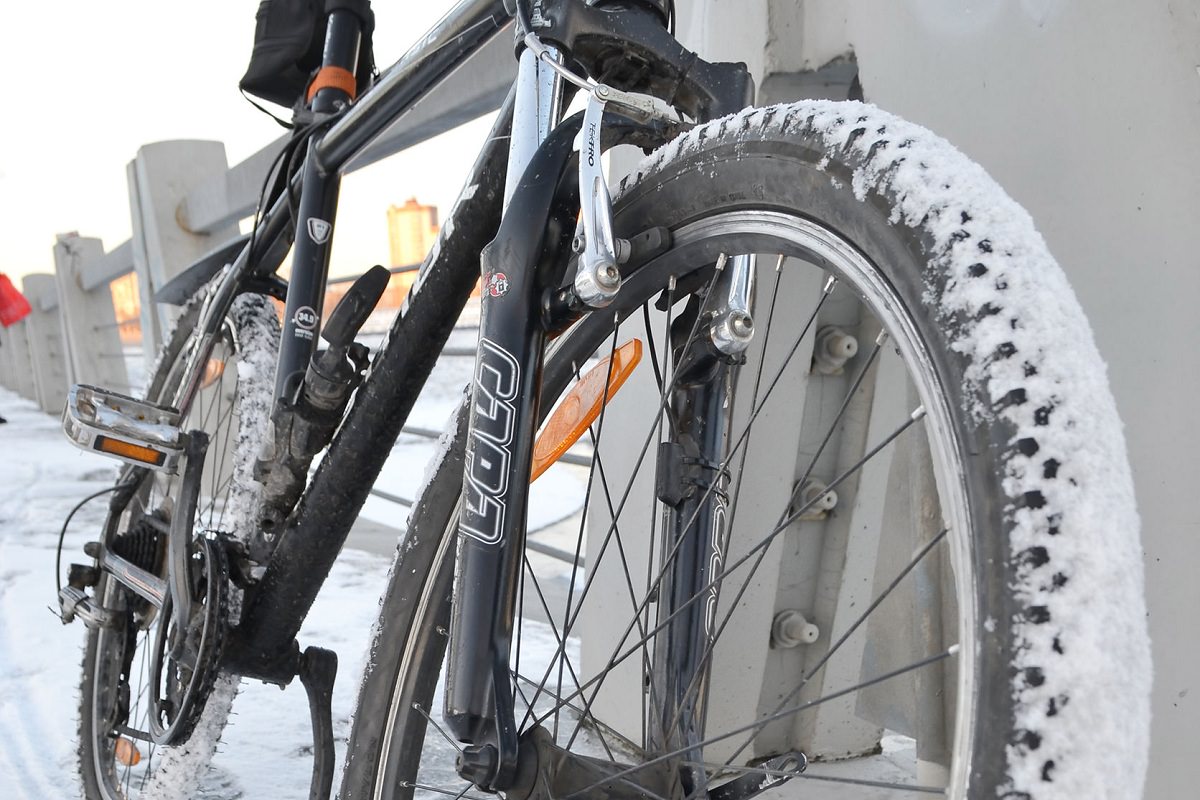
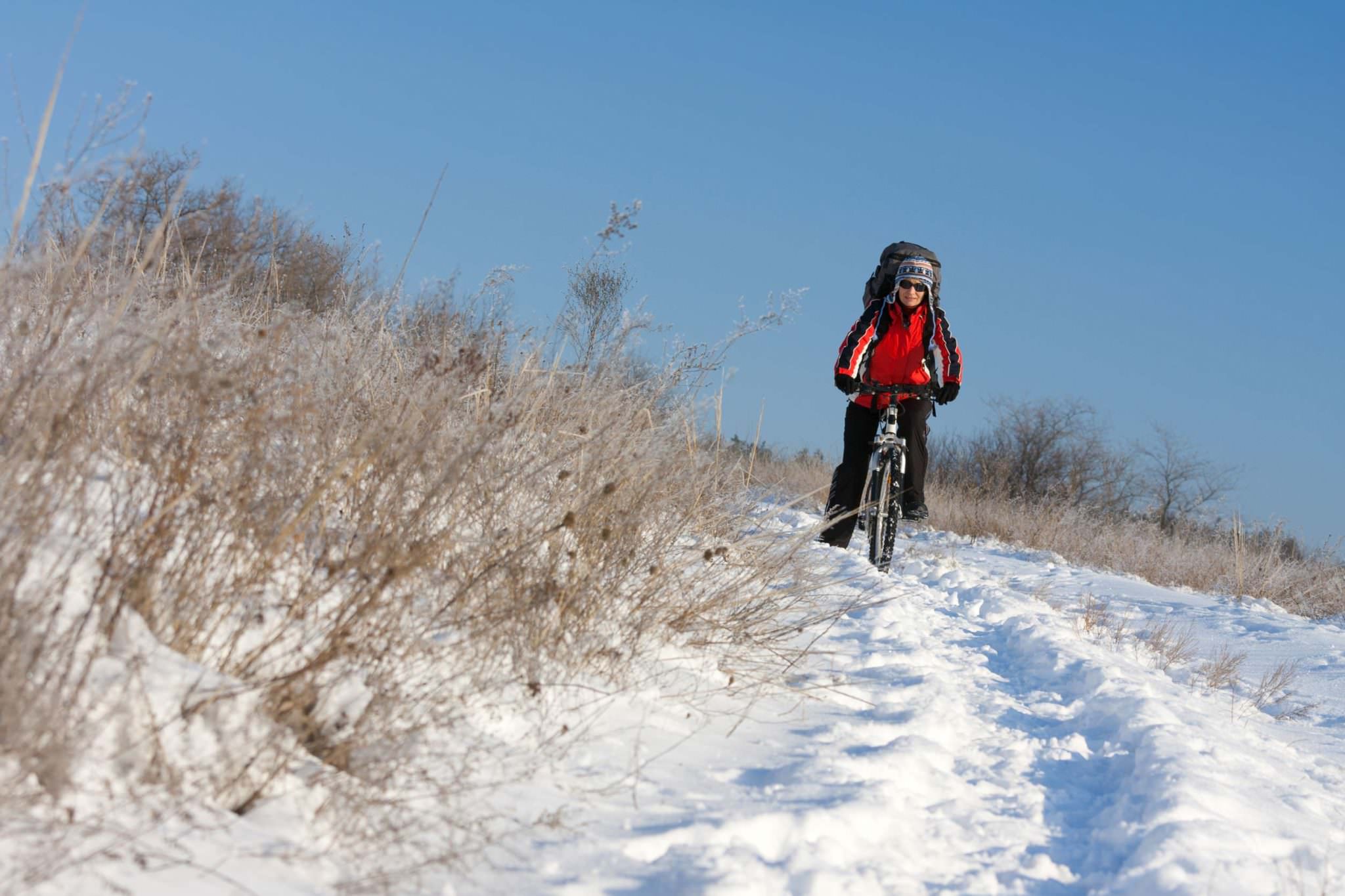
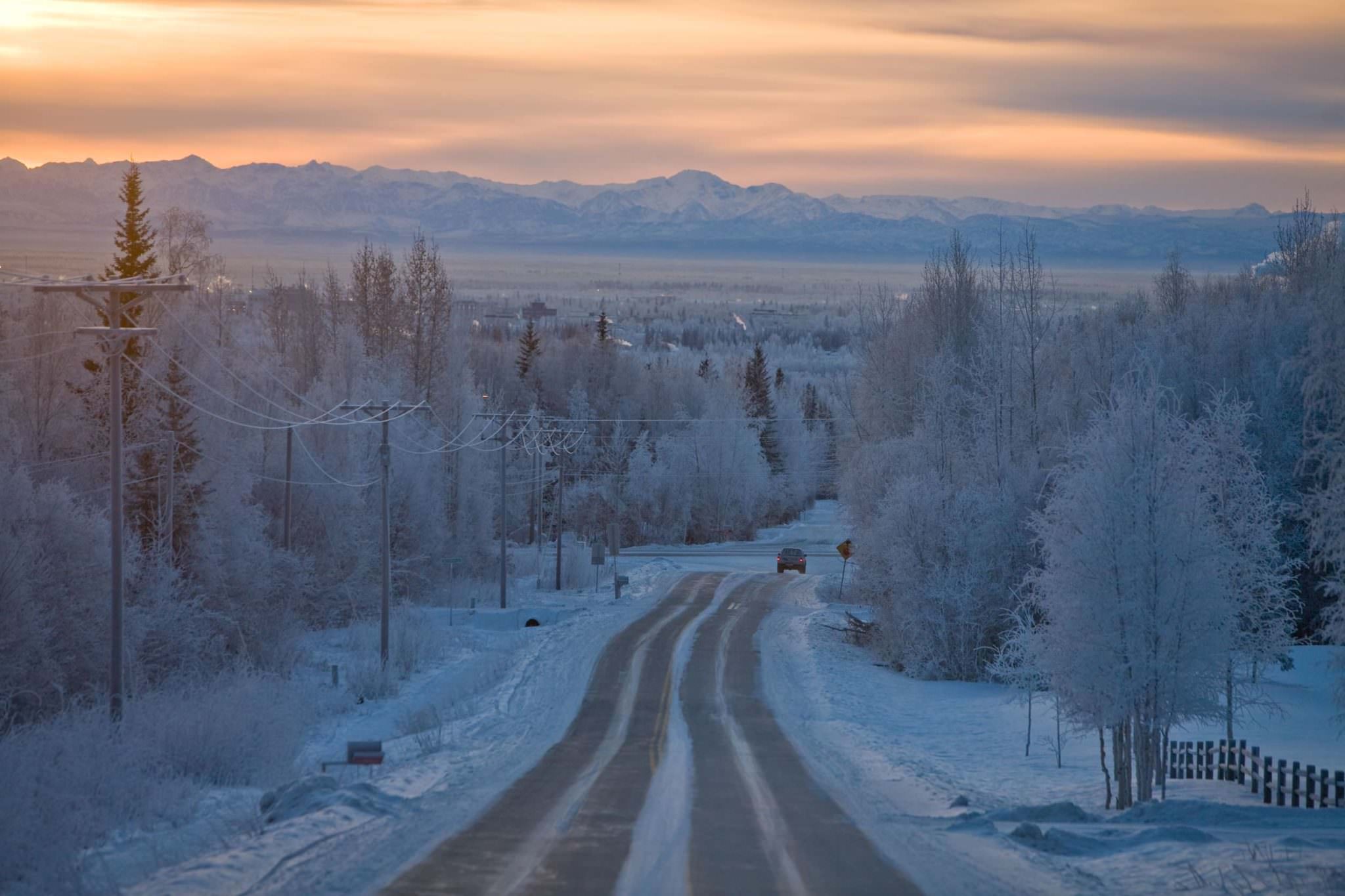
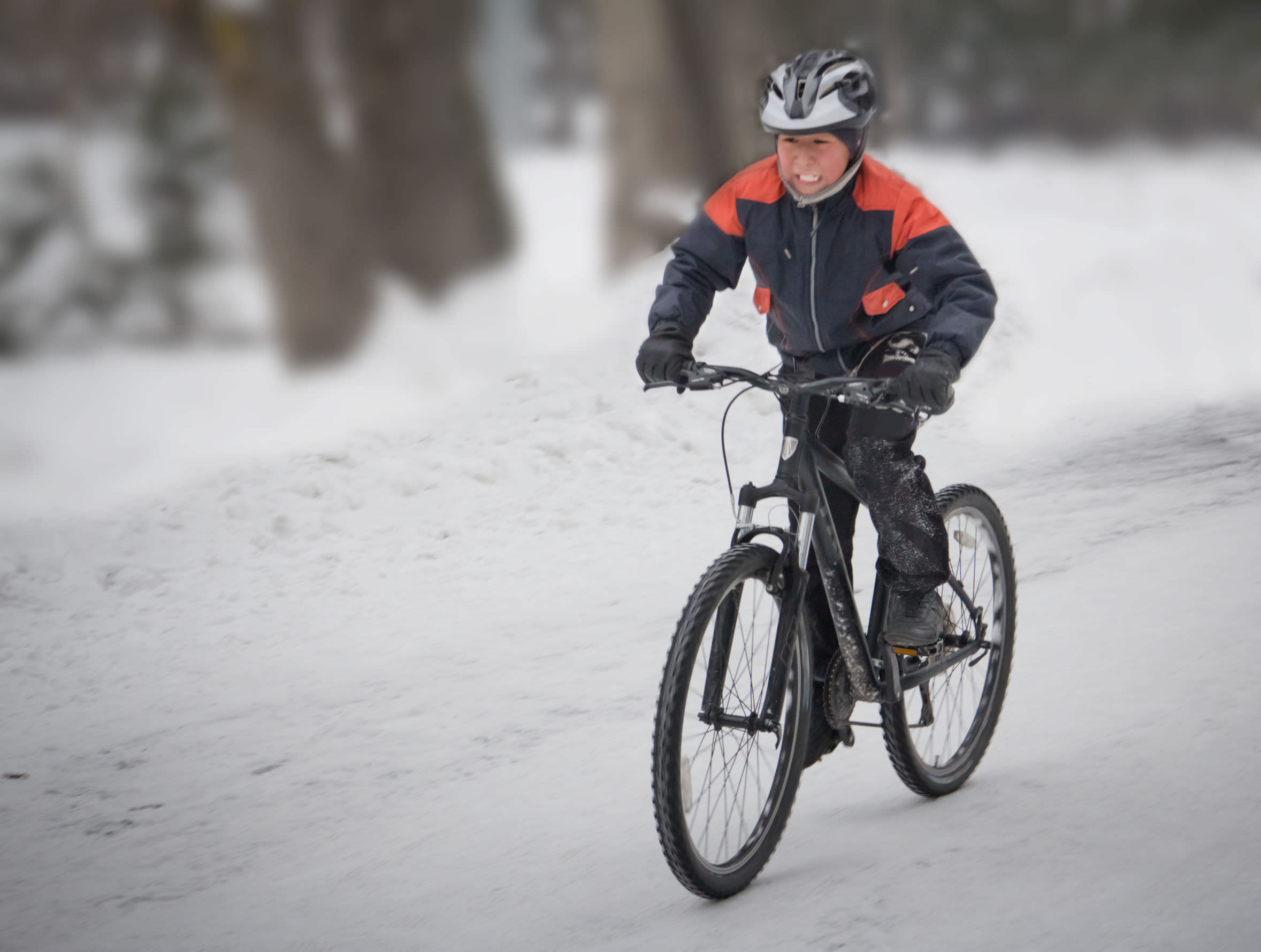
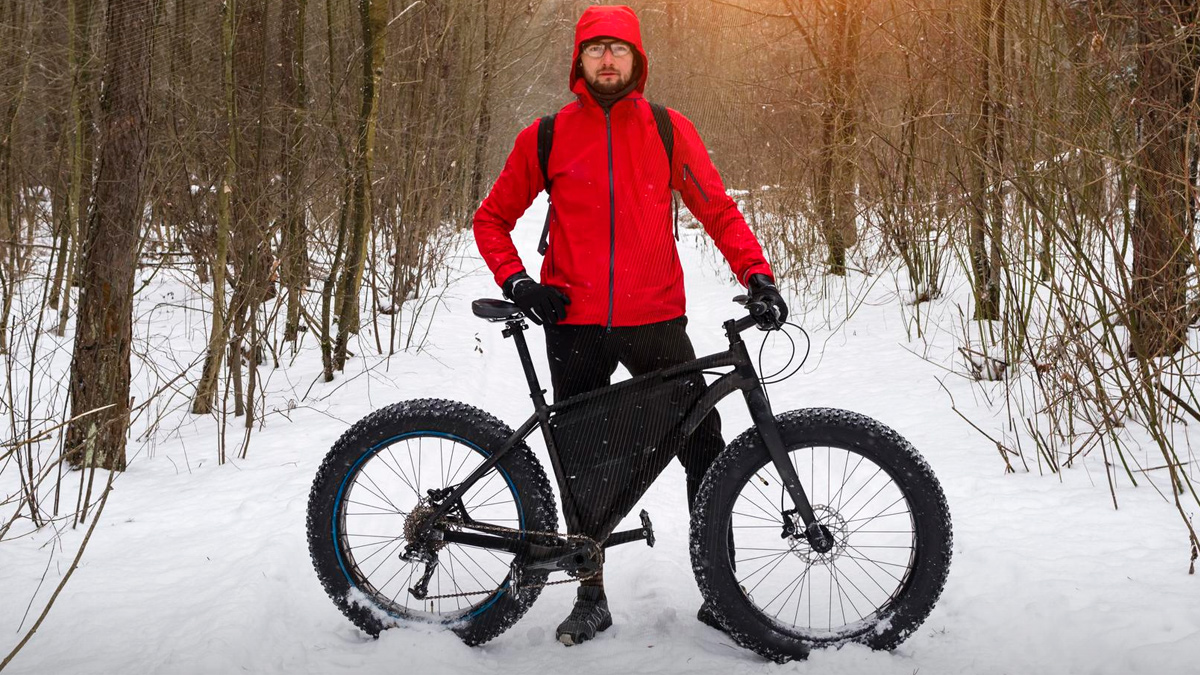

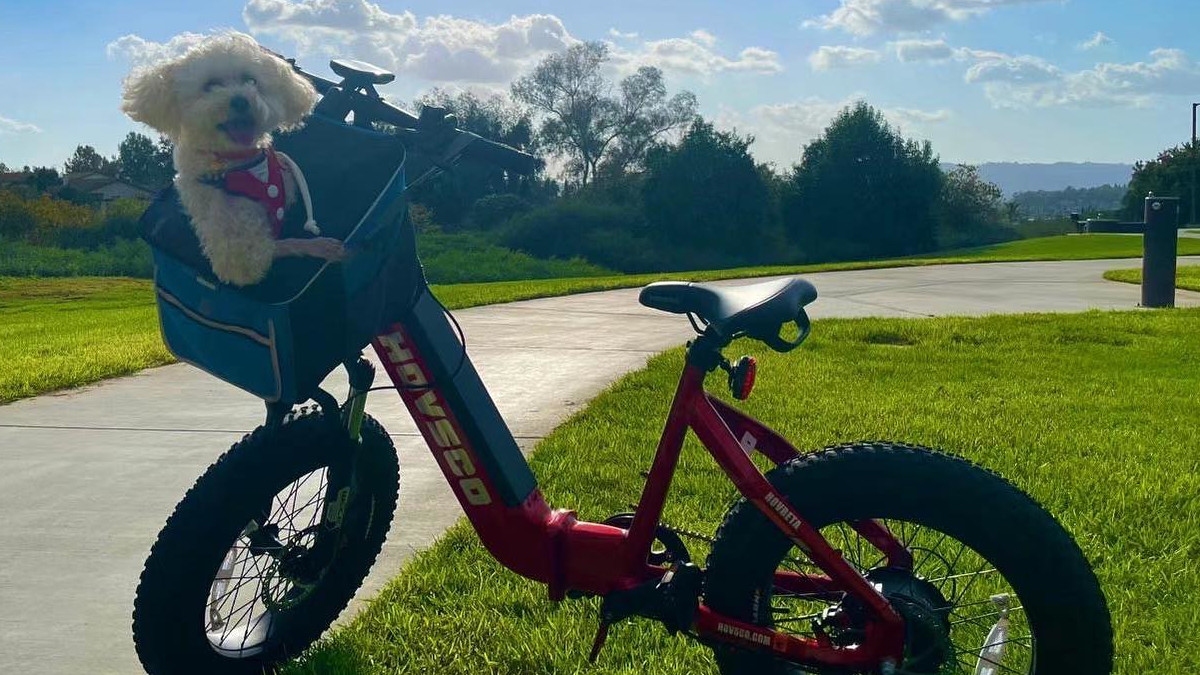
1 thought on “Pam Blalock’s 5 Best Tips to Winter Cycling”
Nice article, Pamela. Great advice. Thinking of winter as it is fast approaching, and I appreciate your perspective…